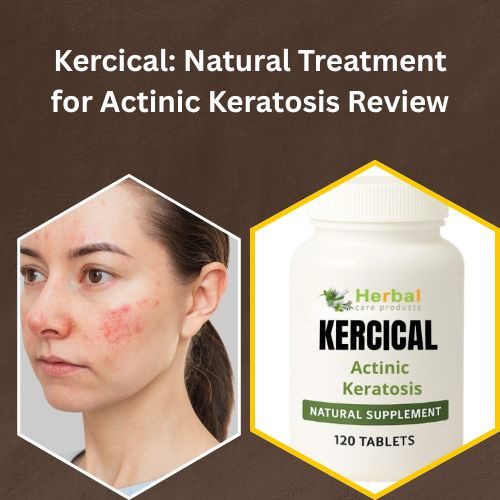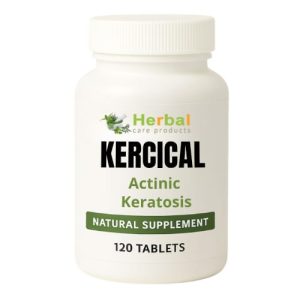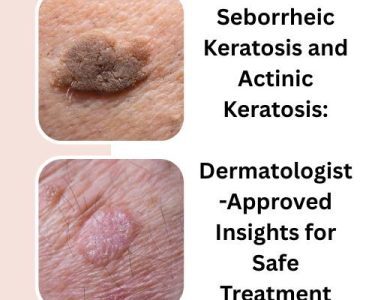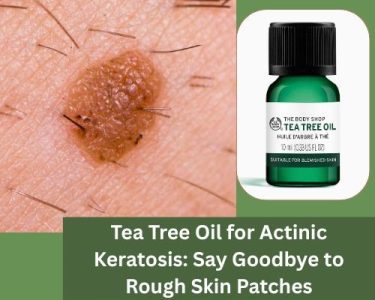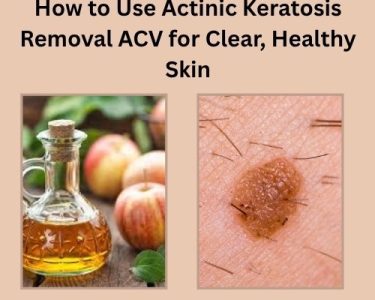Actinic keratosis (AK) is a fairly common skin condition caused by long-term exposure to ultraviolet (UV) radiation. These rough, scaly patches are classified as “precancerous,” since in some cases they may progress into squamous cell carcinoma if left untreated. Conventional treatments include cryotherapy, topical prescription creams, chemical peels, or photodynamic therapy. However, many individuals seek gentler solutions, looking for safe, holistic alternatives to support skin healing.
Enter Kercical, a herbal supplement marketed as a Natural Treatment for Actinic Keratosis. In this review, we analyze its formulation, claims, usage, pros and cons, and evidence quality — so you can decide whether Kercical is worth your consideration.
What is Kercical?
Kercical is an herbal supplement sold by Herbal Care Products, positioned primarily for managing actinic keratosis through natural, botanical means. It is described as a Natural Treatment for Actinic Keratosis that works from the inside out, with claims to help soothe, regenerate, and normalize sun-damaged skin areas.
According to the product page, Kercical is available in capsule form, in variants of 120 tabs or 240 tabs (with a $50 premium for the larger quantity) and is priced between $119.99 and $169.99 depending on the variant.
The manufacturer asserts that Kercical is free from synthetic chemicals, steroids, parabens, or harsh additives, making it suitable for those who prefer a gentler, holistic approach.
Actinic Keratosis (AK)
To evaluate whether Kercical might be helpful, it helps to review what actinic keratosis is, why it matters, and how it is conventionally treated.
What Is Actinic Keratosis?
- Actinic keratosis (AK), also called solar keratosis, is a rough, scaly patch of skin formed due to cumulative sun damage.
- These lesions are most common on sun-exposed areas such as the face, scalp, ears, forearms, and hands.
- They often appear as red, pink, or flesh-colored patches, sometimes with crusting, itching, or sores that bleed.
- Because AKs are considered precancerous, early treatment is recommended.
Conventional Treatment Options
Standard medical treatments include:
- Cryotherapy (liquid nitrogen freezing)
- Topical prescription agents (e.g. 5-fluorouracil cream, imiquimod, diclofenac gel)
- Chemical peels
- Photodynamic therapy
- Excision / surgical removal for thicker or suspicious lesions
These treatments aim to destroy or remove the abnormal, precancerous skin cells so healthy skin can regenerate. But many of them cause side effects — redness, pain, peeling, irritation — and often require dermatological supervision.
Hence, a Natural Treatment for Actinic Keratosis like Kercical appeals to those looking for a gentler, systemic, long-term support approach.
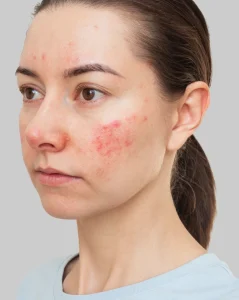
Kercical’s Ingredient Profile
A key factor in assessing any herbal product is its ingredients and the plausibility of their effects. Below is a breakdown of the listed ingredients from Kercical and their purported roles (as per the product page).
Herbal ingredients in Kercical:
- Shilajit
- Liliaceae (a lily family plant)
- Spiny bamboo
- Cloves
- Centaurea behen
- Cassia
- Jadwar (Delphinium denudatum)
- Nutmeg
- Early-purple orchid
- Himalayan peony
- Red-veined salvia (dock)
- Ginger
- Nux vomica
- Grey amber
Purported Functions & Evidence Considerations
Here is how the manufacturer describes the roles of some of these herbs:
| Ingredient | Alleged Function | Notes / Evidence Concerns |
| Shilajit | Detoxifier, supports cellular regeneration | Shilajit is used in traditional systems for rejuvenation; but direct evidence for skin cancer prevention or AK is lacking |
| Liliaceae | Anti-inflammatory, skin soothing | A family name — specific species matters; general anti-inflammatory claims are plausible but not specific |
| Spiny bamboo | Rich in silica, supports collagen & skin renewal | Bamboo extracts are used in skincare for silica content, but internal supplementation for AK is speculative |
| Cloves | Antioxidant, antimicrobial | Clove oil has antioxidant and antimicrobial properties; topical use is studied more than internal use |
| Centaurea behen | Healing of skin, reduce keratin buildup | Traditional claims exist, but scientific trials in human AK are missing |
| Cassia | Detox, antibacterial | Cassia species are used in herbal medicine, but skin cancer support is unverified |
| Jadwar | Anti-inflammatory, immune booster | Traditional herb; little to no clinical evidence for dermatologic lesions |
| Nutmeg | Exfoliation, skin texture | Nutmeg has various bioactive compounds, but internal use for skin remission is not substantiated |
| Early-purple orchid | Nourishment, moisturization | Orchis species do have polysaccharides used in cosmetic formulations, but not well studied for AK |
| Himalayan peony | Soothing, antioxidant | Peony species have flavonoids; some antioxidant potential, but human trials on AK are absent |
| Red-veined salvia (dock) | Detoxification, skin tonic | Dock (Rumex) is used in folk medicine but not validated for precancerous lesions |
| Ginger | Anti-inflammatory, circulation | Ginger has broad anti-inflammatory effects; systemic use is well studied but not specific to AK |
| Nux vomica | (Used in homeopathy / herbal systems) | This is a toxic plant in larger doses — inclusion is controversial and requires caution |
| Grey amber | Tonifying, balancing | Amber and fossil resins are used in traditional medicine; evidence is lacking in modern dermatologic science |
Important caveats:
- The ingredient list includes Nux vomica, which contains strychnine and other potent alkaloids. In herbal practice, such botanicals are used in extremely low, homeopathic doses — but misuse or mislabeling can raise safety concerns.
- The product page does not provide precise dosages for each herb, nor standardization (e.g. “x mg of extract, y% active compound”). This lack of transparency limits the ability to assess plausibility and safety.
- There is no mention of third-party lab verification or toxicology testing on the product page. The disclaimer notes that the information has not been evaluated by the FDA. In sum: the herbal combination is ambitious, aiming to combine antioxidants, anti-inflammatory herbs, detoxifiers, and skin regenerators. But from a scientific perspective, there is no published, peer-reviewed clinical trial (to my knowledge) showing that this precise combination can reliably treat actinic keratosis in humans.
Claimed Benefits & Mechanisms
The product page makes several claims about how Kercical acts as a Natural Treatment for Actinic Keratosis. Below, I list the claims and examine their plausibility (or limitations):
Claimed Benefits
- Reduction of rough, scaly patches
- The botanicals are said to soften and smooth keratotic lesions.
- Plausibility: anti-inflammatory and antioxidant herbs might reduce local irritation, but actual elimination of keratotic lesions is uncertain.
- Prevention of progression to skin cancer
- The product argues that antioxidant agents help counter DNA damage, thereby reducing the risk of progression to squamous cell carcinoma.
- Plausibility: while antioxidants theoretically protect cells, no evidence confirms this blend prevents malignant transformation in AK.
- Promotion of natural skin healing / regeneration
- By supporting anti-inflammatory and immune processes, Kercical is claimed to help skin restore itself.
- Plausibility: plausible in general, but whether it suffices to reverse AK lesions is unproven.
- Boosting immune defense in skin cells
- The herbs are said to “revitalize skin immunity” so that recurrent AK is less likely.
- Plausibility: systemic immune support is a broad claim. Topical immune modulation is more targeted in dermatology.
- Gentle and non-irritating
- Because Kercical is internal and herbal, it purportedly avoids the burning, peeling, or irritation caused by topical or destructive therapies.
- Plausibility: likely true if one tolerates the herbs, but systemic side effects are possible.
- No harsh chemicals or steroids
- The product highlights its “100% natural” composition.
- Plausibility: likely accurate per manufacturer, though “natural” does not automatically equal safe.
- Supports even skin tone, holistic skin health
- By balancing melanin production and detoxifying, Kercical may help reduce discoloration.
- Plausibility: such effects are speculative for internal oral remedies.
Mechanistic Considerations
- The theory is that internal herbal support can reach sun-damaged skin from within, modulate inflammation, promote antioxidant defenses, and then gradually resolve abnormal lesions.
- However, most dermatological treatments act locally (on the skin) because systemic interventions must cross many biological barriers and may be diluted or metabolized before reaching the target tissue.
- Also, AK lesions are localized dysplasia of skin cells; reversing them typically involves destruction/removal rather than gradual suppression. Whether herbal systemic therapy can fully reverse dysplasia is uncertain.
How to Use Kercical
According to the product page, the usage instructions are fairly straightforward.
Dosage Instructions:
- Take two Kercical tablets per day, strictly after breakfast.
- Take with water at room temperature or warm milk; avoid cold drinks.
- Do not take on an empty stomach; avoid deviation from the timing.
- Continue for 3 to 6 months (or longer) for best results, as natural healing is gradual.
Additional Guidelines & Precautions:
- Avoid more than 2 pills per day — authors warn that exceeding dosage may affect the immune system.
- Avoid cold drinks while taking the product.
- Minimize sun exposure, wear UV protective clothing, and use sunscreen.
- Those with weaker immune systems, existing medical history, or sensitivity to herbs should use caution.
- The product page emphasizes patience, noting that “herbs used do not violate endangered species list, FDA or MCA rules,” but also emphasizes that recovery is not overnight.
One thing to note: the instructions only mention oral capsules, not any topical application. So Kercical is designed as a systemic, internal therapy rather than a cream or ointment.
Safety, Risks & Warnings
Whenever dealing with herbal formulas, especially for serious skin conditions, safety becomes paramount.
Safety Considerations
- Toxic or Potent Herbs
- Nux vomica is contained in the formula, which is known to carry potential toxicity if misused. Even in small doses, individuals sensitive to alkaloids may react.
- The lack of precise dosing or standardization raises the risk of variable potency and batch inconsistencies.
- Drug Interactions
- Herbal components could interact with medications (e.g. anticoagulants, immunosuppressants, other herbal supplements).
- Without published pharmacokinetic data, it’s difficult to rule out interactions.
- Allergies & Sensitivities
- Anyone allergic to plants in the lily family (Liliaceae) or nutmeg or ginger may experience adverse reactions.
- Skin reactions or systemic symptoms (gastrointestinal upset, headaches) are possible.
- Delayed Medical Care
- Relying solely on a supplement for Actinic Keratosis may delay proven medical treatments when a lesion is actually progressing. This could pose risk of malignant transformation.
- Lack of Regulatory Oversight
- The product page clearly states that the claims have not been evaluated by the FDA, and that this is not a substitute for medical advice.
- Best Herbal Supplements Products are often less stringently regulated, meaning batch purity, contamination, or mislabeling are possible issues.
- Use in Vulnerable Populations
- Pregnant or lactating women, children, patients with autoimmune disease or organ failure should be especially cautious.
- The manufacturer warns that those with weak immune systems or bad medical history should “take the medicine at their own risk.”
Warnings Mentioned by Manufacturer
- Avoid taking more than 2 tablets/day.
- Do not take before meals or with cold drinks.
- Scratching lesions can cause scarring; avoid mechanical trauma.
- Exposure to industrial chemicals and UV must be minimized.
- The manufacturer explicitly disclaims that results are not instantaneous and medical guidance must not be substituted.
Given these points, anyone considering Kercical should consult a dermatologist or integrative medicine specialist before use, especially if other treatments are being used.
Strengths & Weaknesses of Kercical
Here’s how I would assess the pros and cons of Kercical, as a Natural Treatment for Actinic Keratosis.
Strengths
- Holistic & Gentle Approach: For those who dislike harsh topical or surgical methods, an internal herbal approach is attractive.
- Natural Ingredients: The formula is marketed as free of synthetic chemicals, steroids, or harsh preservatives.
- Convenient Dosage Form: Oral capsules are easier to use long term than repeated topical regimens or clinic visits.
- Supportive Measures Encouraged: The instructions emphasize sun protection, hydration, and patience, which are important.
- Long-term Use Focus: The design encourages sustained use over months, aligning with the slow nature of skin repair.
Weaknesses / Limitations
- Lack of Clinical Evidence: No published, peer-reviewed randomized controlled trials (to my knowledge) support Kercical for AK.
- Unclear Dosing & Standardization: Without precise active compound levels or batch testing, potency may vary.
- Safety Risks: The inclusion of potent herbs like Nux vomica raises safety flags.
- Delayed Efficacy: Herbal treatments tend to act slowly; severe or thick AK lesions may not respond adequately.
- Potential for False Security: Users might forgo needed dermatologic treatment.
- Cost: At $119.99–$169.99 for 120–240 tablets, long courses could be expensive, especially if effectiveness is uncertain.
- No Topical Component: Since AK is a skin lesion, many successful treatments act topically. An internal-only approach may lack direct lesion targeting.
Comparison to Conventional Treatments
To decide whether Kercical is a viable option, it helps to compare it to standard therapies in terms of efficacy, safety, convenience, and cost.
| Factor | Conventional Treatments | Kercical (Natural Approach) |
| Efficacy / Speed | Cryotherapy, chemical peels, and prescription topicals often yield visible results in weeks | Herbal therapy is slower; lesion regression may take months or may only partially improve |
| Side Effects | Redness, pain, peeling, scarring risk | Systemic side effects possible; potentially milder local discomfort |
| Need for Clinical Supervision | Requires dermatologist visits | Can be self-administered, though medical supervision is still wise |
| Cost | Varies (clinic fees, drug costs) | Continuous cost over months; may add up |
| Targeting | Direct topical or destructive methods target lesion site | Systemic approach may lack direct lesion specificity |
| Recurrence Prevention | Some topicals (e.g. imiquimod) have immune-modulating benefits | Kercical claims immune support, but not clinically proven |
In many cases, conventional treatment remains the gold standard because it directly removes abnormal cells. Herbal or natural treatments may best serve as adjuncts or in mild cases, but not necessarily as full replacements — especially in moderate-to-severe lesions.
User Feedback & Testimonials
While peer-reviewed trials are lacking, the product page and various user forums or testimonials (if one finds them) may provide anecdotal feedback. On the product site, the vendor claims a “backed by years of customer success and satisfaction” status.
Typical user testimonials (often on herbal supplement sites) tend to highlight:
- Reduction in roughness or scaling
- Fading of discolored patches
- Improvement in skin smoothness
- Minimal irritation or side effects
However, it is vital to treat such testimonials with caution — placebo effects, self-selection bias, and lack of verification are common. Before & after photos, dermatologic confirmation, or long-term follow up are often lacking.
If you plan to use Kercical, seek out independent reviews (forums, skin care communities), and ideally share your results with a dermatologist to monitor lesion change.
Final Verdict
Kercical is a bold attempt to provide a Natural Treatment for Actinic Keratosis via a comprehensive, internal herbal formula. The idea of managing AK with an oral, botanical remedy is compelling, especially for individuals wary of harsh dermatologic therapies. The product claims are many: smoothing scaly lesions, modulating immunity, reducing progression to skin cancer, supporting holistic skin health, all while being gentle, natural, and chemical-free.
However, the current scientific backing is weak — there is no published clinical trial that conclusively demonstrates that such a formula can effectively reverse or eradicate actinic keratosis. The lack of detailed standardization, potential safety concerns (notably the inclusion of herbs like Nux vomica), and the risk of delaying proven therapies are significant downsides.
Thus, my balanced verdict:
- Kercical may be a viable adjunctive or support option, particularly in mild or very early AK, as long as the user continues dermatologic surveillance and protection.
- It should not be viewed as a standalone replacement for medically established treatments in moderate or suspicious lesions.
- Anyone considering Kercical should consult with a dermatologist or integrative medicine provider first, monitor lesions (photograph, measure) regularly, and discontinue if any worsening occurs.
If I were advising a friend, I’d say: “Kercical could help with skin support, but don’t skip your dermatologist — use it in tandem, not instead, until you have stronger clinical evidence.”

